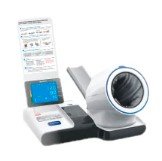Ensuring Proper Sterilization in Medical Labs: A Phlebotomist's Guide
Summary
- Proper sterilization and maintenance of equipment is crucial in preventing the spread of Infectious Diseases in medical labs.
- Phlebotomists follow strict protocols and guidelines to ensure the cleanliness and safety of their equipment.
- Regular training and monitoring are essential to maintain high standards of sterilization in medical labs.
Introduction
Medical laboratories play a crucial role in diagnosing and treating patients, and maintaining a clean, sterile environment is essential to prevent the spread of Infectious Diseases. Phlebotomists, who specialize in drawing blood samples for testing, must ensure that their equipment is properly sterilized and maintained to protect both themselves and their patients. In this article, we will explore how phlebotomists ensure proper sterilization and maintenance of their equipment in order to prevent the spread of Infectious Diseases in medical labs.
Importance of Sterilization in Medical Labs
Sterilization is the process of killing all microorganisms on equipment and surfaces to prevent the spread of Infectious Diseases. In a medical lab setting, proper sterilization is crucial to ensure the accuracy of Test Results and protect the health and safety of both patients and healthcare workers. Failure to sterilize equipment can lead to contamination of samples, misdiagnosis of diseases, and the spread of infections.
Consequences of Improper Sterilization
When equipment is not properly sterilized in a medical lab, it can have serious consequences, including:
- Contamination of blood samples, leading to inaccurate Test Results
- Increased risk of healthcare-associated infections
- Compromised patient safety and well-being
Regulations for Sterilization in Medical Labs
The Centers for Disease Control and Prevention (CDC) and the Occupational Safety and Health Administration (OSHA) have established guidelines and Regulations for the sterilization of equipment in medical labs. These Regulations are designed to ensure the safety of patients and healthcare workers and maintain the integrity of Test Results.
Phlebotomists and Equipment Sterilization
Phlebotomists are responsible for drawing blood samples from patients for testing, and proper sterilization of their equipment is essential to prevent the transmission of Infectious Diseases. Phlebotomists follow strict protocols and guidelines to ensure that their equipment is clean and sterile at all times.
Steps for Sterilizing Equipment
Phlebotomists follow a series of steps to sterilize their equipment properly:
- Wash hands thoroughly with soap and water
- Clean equipment with disinfectant wipes or solution
- Use sterile gloves when drawing blood
- Dispose of used needles and supplies in biohazard containers
- Regularly clean and sterilize equipment between patients
Training and Education
Phlebotomists undergo rigorous training and education on proper sterilization techniques to ensure the safety and well-being of their patients. They are taught the importance of maintaining a clean and sterile environment in the medical lab and are required to adhere to strict guidelines and protocols at all times.
Monitoring and Quality Control
Regular monitoring and Quality Control measures are implemented in medical labs to ensure that equipment is properly sterilized and maintained. Phlebotomists are supervised and evaluated on their sterilization practices to identify any areas for improvement and ensure that high standards of cleanliness are maintained at all times.
Conclusion
Proper sterilization and maintenance of equipment are essential in preventing the spread of Infectious Diseases in medical labs. Phlebotomists play a critical role in ensuring that their equipment is clean and sterile to protect both themselves and their patients. By following strict protocols, undergoing training and education, and being monitored for Quality Control, phlebotomists can maintain high standards of sterilization in medical labs and contribute to the overall safety and well-being of those they serve.

Disclaimer: The content provided on this blog is for informational purposes only, reflecting the personal opinions and insights of the author(s) on the topics. The information provided should not be used for diagnosing or treating a health problem or disease, and those seeking personal medical advice should consult with a licensed physician. Always seek the advice of your doctor or other qualified health provider regarding a medical condition. Never disregard professional medical advice or delay in seeking it because of something you have read on this website. If you think you may have a medical emergency, call 911 or go to the nearest emergency room immediately. No physician-patient relationship is created by this web site or its use. No contributors to this web site make any representations, express or implied, with respect to the information provided herein or to its use. While we strive to share accurate and up-to-date information, we cannot guarantee the completeness, reliability, or accuracy of the content. The blog may also include links to external websites and resources for the convenience of our readers. Please note that linking to other sites does not imply endorsement of their content, practices, or services by us. Readers should use their discretion and judgment while exploring any external links and resources mentioned on this blog.
